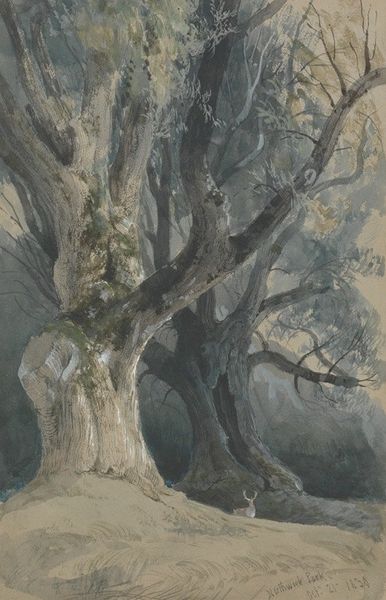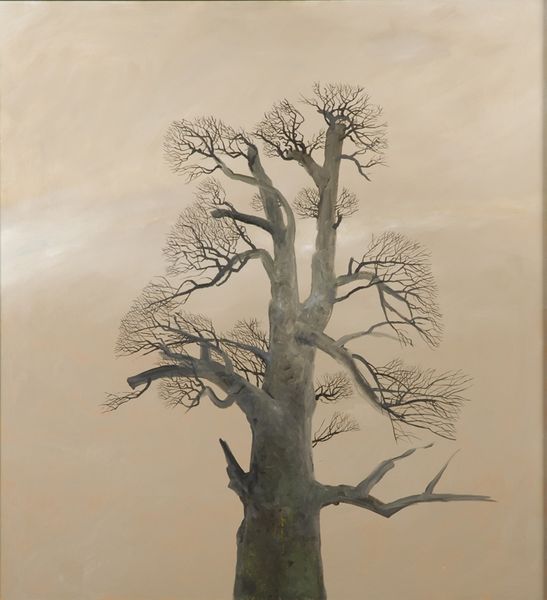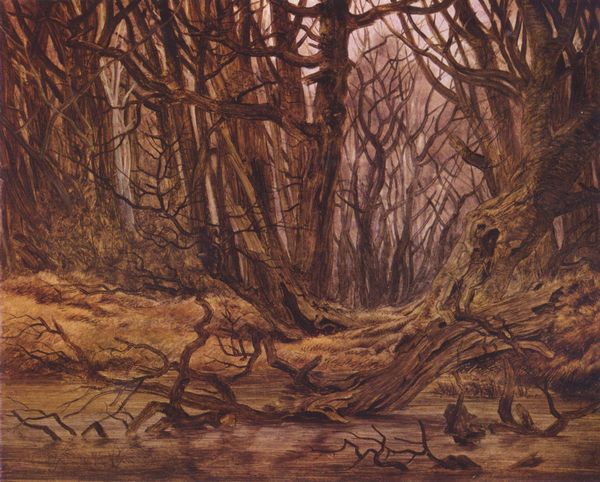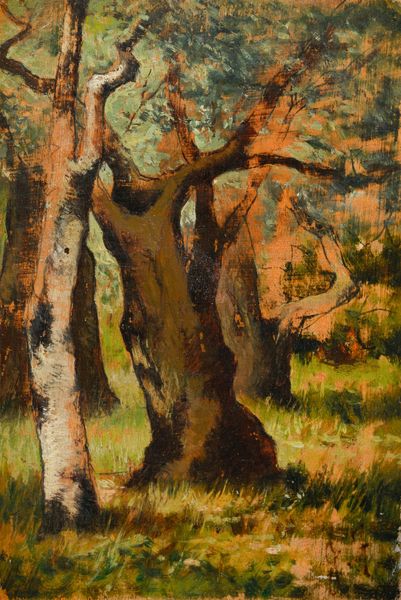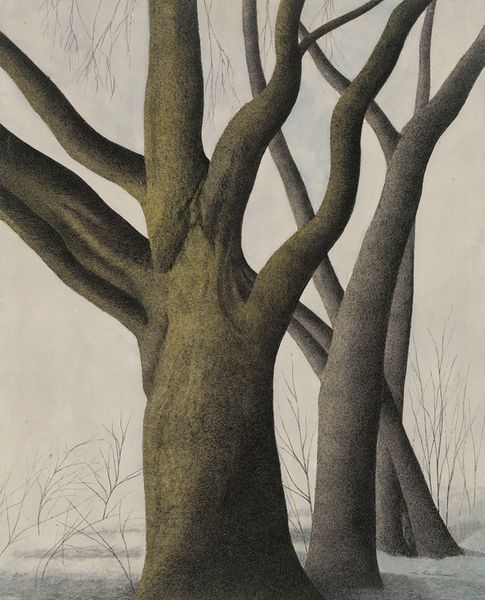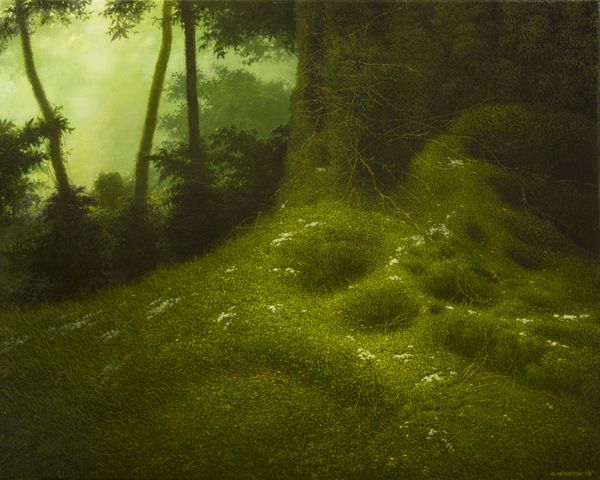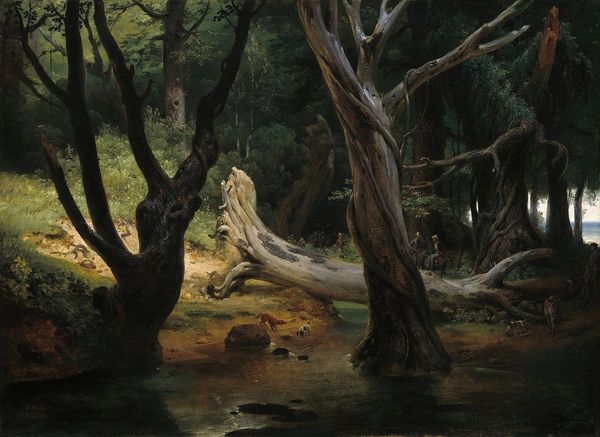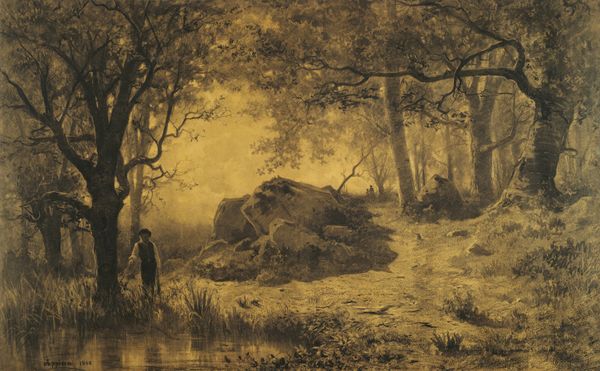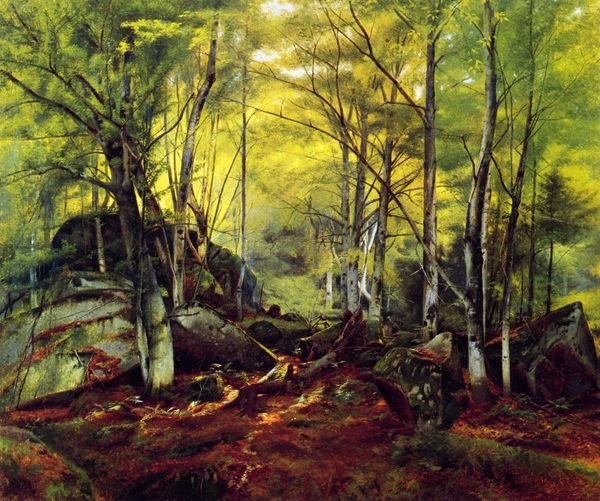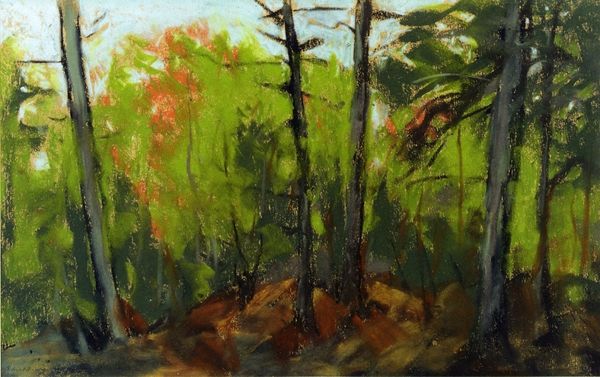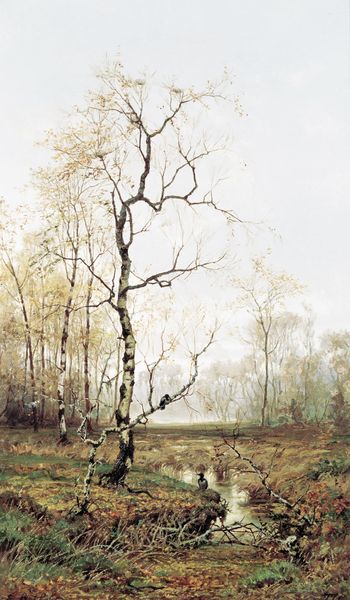
Copyright: Stefan Caltia,Fair Use
Stefan Caltia painted this Beechwood Valley without a known date, capturing a silent convergence in the forest. Here, the trees are not merely wood and leaf but silent witnesses. Notice the broken tree trunk. It is reminiscent of classical ruins that appear in Renaissance paintings. The ruin, a symbol of the transience of human endeavor, is here translated into a natural form. Similarly, the forest, shrouded in mist, evokes the German Romantic concept of the sublime, a space where the rational mind confronts the overwhelming power of nature. Consider the work of Caspar David Friedrich. His landscapes similarly use the motif of the forest to explore themes of introspection and the search for spiritual meaning. The misty forest is a stage for the human psyche, a space where memories and emotions intertwine. This image triggers a powerful emotional and psychological response. The cyclical nature of decay and rebirth is at play here, echoing across time and cultures, reminding us of the ever-evolving dance between humanity and the natural world.
Comments
No comments
Be the first to comment and join the conversation on the ultimate creative platform.
